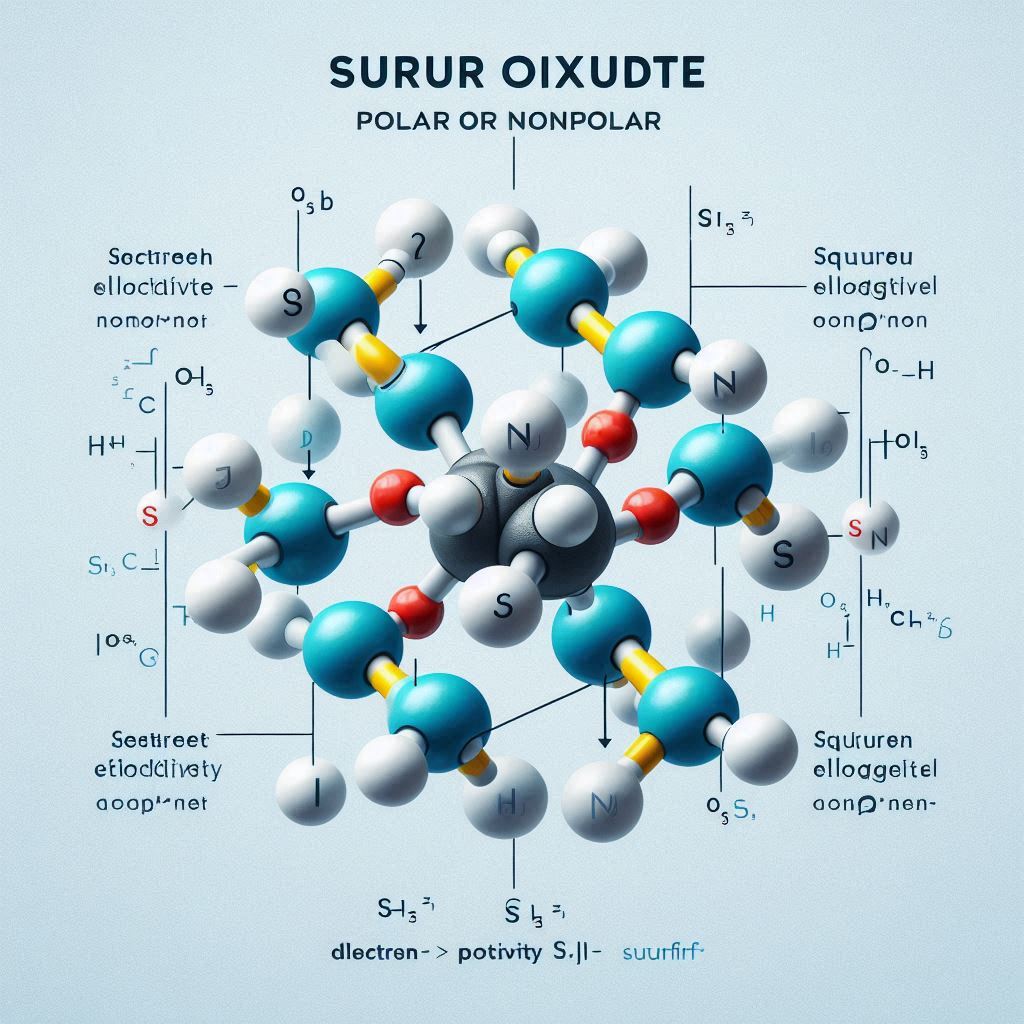
Sulfur dioxide polar or nonpolar
This article is about Sulfur dioxide polar or nonpolar.
The difference in electronegativity between sulfur and oxygen makes sulfur dioxide a polar molecule. This is because its molecular structure is bent instead of straight. The polar character of the sulfur atom is shown by the dipole moment that is produced as a result of the unequal distribution of electrons around the sulfur atom. This polarity is mirrored in its physical qualities, such as the ability to dissolve in water and the significantly higher boiling temperature for a molecule of its size. Both of these features are examples of how polarity comes into play. In a variety of applications, including environmental science, where it plays a role in air quality and atmospheric chemistry, having a solid understanding of the polarity of sulfur dioxide is essential. In general, the polar form of sulfur dioxide has consequences for its behavior in a variety of chemical and physical contexts, which allows it to be an intriguing topic of research within the field of chemistry.
Deeper investigation into the consequences of the polar nature of sulfur dioxide exposes its significance in the processes that affect the environment, the effects that it has on human health, and the uses that it has in industry. Because of its impact on the chemical composition of the atmosphere, in particular the creation of acid rain, there is an urgent need for environmentally responsible practices and regulatory measures to reduce the negative impacts of this phenomenon. In addition, the comprehension of the polar properties of sulfur dioxide has practical implications in the field of chemical synthesis as well as environmental monitoring, which contributes to the development of both industrial processes and environmental science. In general, the polar character of sulfur dioxide goes beyond its molecular structure, which is what determines the influence that it has on the environment that we live in every day.
Sulfur dioxide (SO2) is a chemical compound composed of one sulfur atom and two oxygen atoms. To determine whether sulfur dioxide is polar or nonpolar, it is essential to analyze its molecular structure and the distribution of electrons.
Firstly, let's examine the Lewis structure of sulfur dioxide. Sulfur has six valence electrons, while oxygen has six each. The sulfur atom forms double bonds with two oxygen atoms, resulting in a bent molecular geometry. This bent shape creates an uneven distribution of electrons around the sulfur atom, leading to a polar molecule.
The electronegativity difference between sulfur (2.58) and oxygen (3.44) further supports the polar nature of sulfur dioxide. Electronegativity is a measure of an atom's ability to attract shared electrons in a covalent bond. Oxygen, being more electronegative than sulfur, attracts the shared electrons more strongly, creating a dipole moment.
A dipole moment arises when there is an uneven distribution of electron density in a molecule, causing one end to be more negative and the other more positive. In the case of sulfur dioxide, the bent shape and electronegativity difference result in a net dipole moment, making it a polar molecule.
The polar nature of sulfur dioxide is also evident when considering its physical properties. Sulfur dioxide is a gas at room temperature and exhibits a boiling point of -10 degrees Celsius. The presence of polar bonds contributes to the relatively higher boiling point compared to nonpolar gases of similar molecular weight.
Additionally, sulfur dioxide can dissolve in polar solvents like water due to its polar nature. When sulfur dioxide dissolves in water, it forms sulfurous acid (H2SO3), further emphasizing its polar characteristics.
However, it is essential to acknowledge that the polar or nonpolar nature of a molecule exists on a spectrum, and some molecules may exhibit partial polarity. In the case of sulfur dioxide, the bent structure and electronegativity difference contribute to its overall polar character, but the extent of polarity is not as high as in some other molecules.
Expanding on the significance of sulfur dioxide's polar nature, it is essential to explore its real-world applications and environmental implications. Sulfur dioxide is a common air pollutant primarily emitted from burning fossil fuels containing sulfur compounds, such as coal and oil. Understanding its molecular characteristics, including its polar nature, helps elucidate its behavior in the atmosphere and its impact on both human health and the environment.
As a polar molecule, sulfur dioxide interacts with water vapor and other polar substances in the atmosphere. This interaction is crucial in the formation of acid rain. When sulfur dioxide reacts with atmospheric water, it forms sulfurous acid (H2SO3), a weak acid that can further contribute to the acidity of rain. Acid rain has detrimental effects on ecosystems, as it can damage soil, harm aquatic life in lakes and rivers, and impact vegetation. The polar nature of sulfur dioxide plays a pivotal role in these atmospheric interactions, influencing the distribution and deposition of acid rain.
Moreover, the polar character of sulfur dioxide affects its solubility in water, making it more readily absorbed by respiratory surfaces in living organisms. Inhaling sulfur dioxide can lead to respiratory issues, exacerbate existing respiratory conditions, and contribute to air pollution-related health problems. The understanding of its polar nature is, therefore, crucial in assessing its impact on human health and implementing effective air quality regulations.
In industrial applications, the polar nature of sulfur dioxide is exploited in various chemical processes. Sulfur dioxide is used in the synthesis of sulfuric acid (H2SO4), a vital industrial chemical with widespread applications, including in the production of fertilizers, detergents, and various chemical products. The polar characteristics of sulfur dioxide contribute to its reactivity in these chemical reactions, allowing for the formation of new compounds with diverse applications.
Sulfur dioxide's polar nature is also relevant in environmental monitoring. Analyzing its behavior in the atmosphere, its solubility in water, and its interactions with other compounds helps researchers and policymakers track its emissions, assess its impact on ecosystems, and develop strategies to mitigate its environmental effects.

